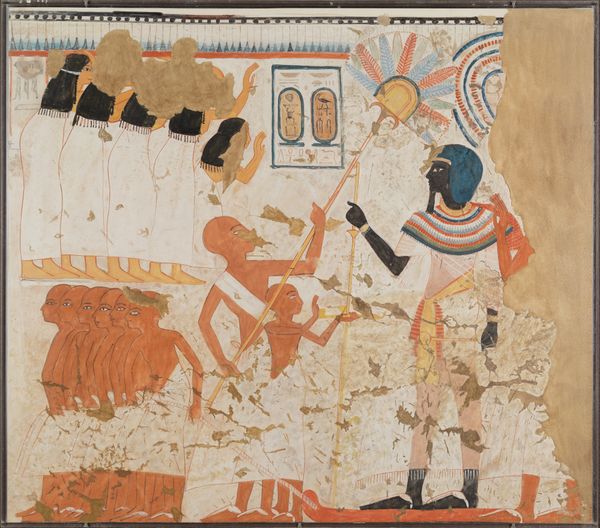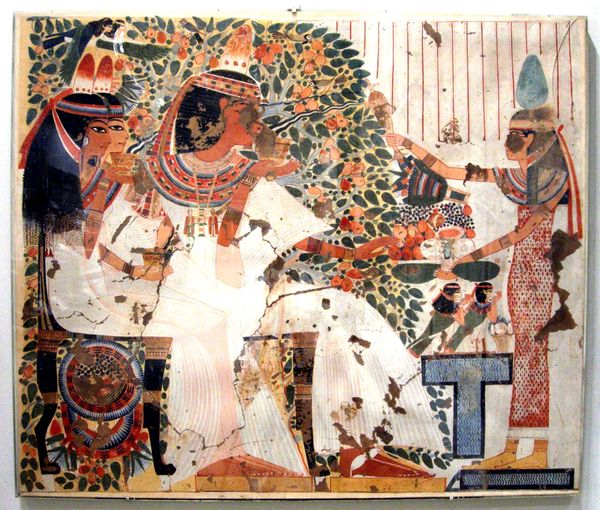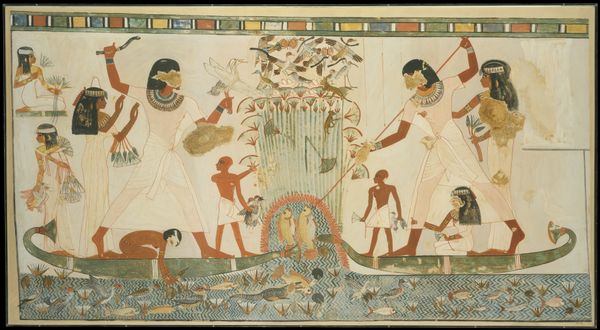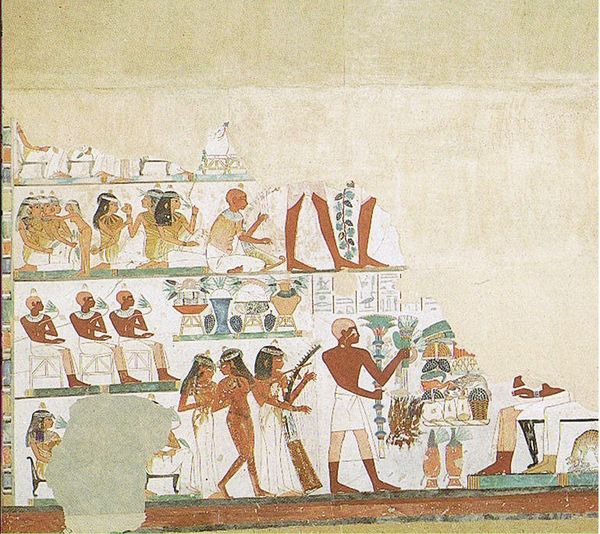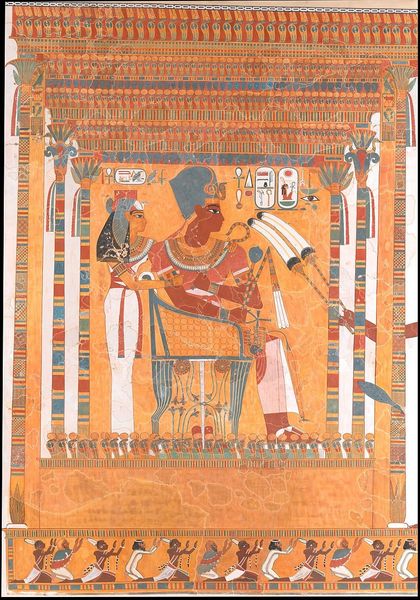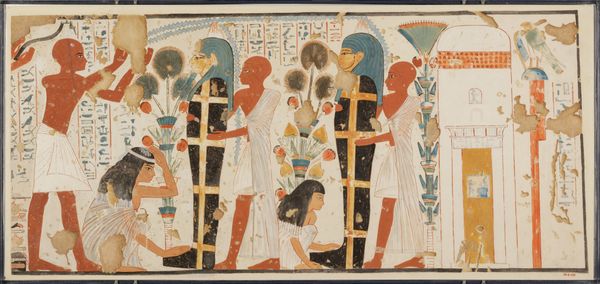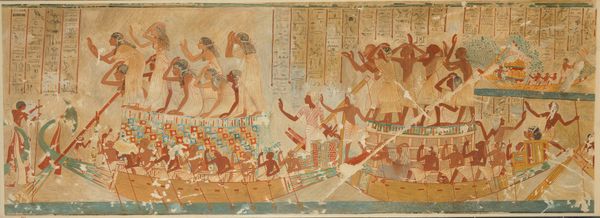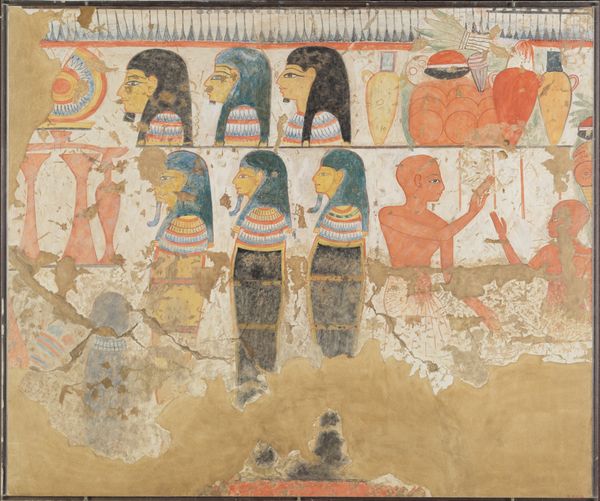
Amenhotep III and Queen Tiye Enthroned Beneath a Kiosk, Tomb of Anen 1390 BC
0:00
0:00
painting, fresco
#
portrait
#
animal
#
painting
#
landscape
#
ancient-egyptian-art
#
figuration
#
fresco
#
traditional architecture
#
tile art
#
egypt
#
earthy colours
#
ancient-mediterranean
#
men
#
history-painting
Dimensions: Facsimile: H. 71.2 × W. 103.4 cm (28 1/16 × 40 11/16 in.); Framed: H. 73 × W. 104.5 cm (28 3/4 × 41 1/8 in.); Scale 1:2
Copyright: Public Domain
Curator: Here we have a painted fresco from the Tomb of Anen, circa 1390 BC, during the reign of Amenhotep III. It depicts Amenhotep III and Queen Tiye Enthroned Beneath a Kiosk. What is your immediate reaction to this artwork? Editor: Starkly beautiful, even in its fragmented state. I’m struck by the muted palette, the earthy tones dominating—sandstone, ochre—and the way those colors tell of the arid landscape that gave birth to this image. Curator: The use of those colours undoubtedly establishes a particular aesthetic and also functions to represent the subject of power within its cultural and environmental milieu. Note how the figures are composed according to a precise visual language: their idealized forms, rigid postures, and symbolic ornamentation signify royal status. Editor: It makes me think about the materials: the pigments, likely derived from minerals ground and mixed with a binder. The labour required to create this—the quarrying, grinding, mixing, the physical act of painting on the tomb wall. We often overlook the hands that made these objects when analyzing artistic representations of power. Curator: Precisely. Although here the visual organization invites contemplation of idealized concepts through ordered space. We are clearly meant to comprehend power’s visual semiotics, and the figures relate through a complex yet readable encoding. The composition's layers and use of registers offer a complete hierarchical panorama. Editor: Yes, and it raises questions. Where did those materials come from? Who controlled their distribution and the skills for manipulating them? These practical concerns reflect the larger societal dynamics inscribed into the fresco itself. The very act of painting becomes a symbol of control. Curator: Consider how traditional architecture appears in relation to the human figure. These forms serve as a visual frame, organizing perception and emphasizing the significance of the rulers within a sacred space. This is further accentuated by hieroglyphic texts and symmetrical balance which act as additional compositional devices. Editor: I hadn't considered the relationship between the act of its creation and the dynamics displayed within it so clearly. Curator: These points of interplay provide insight into its creation. Thank you for adding your thoughts!
Comments
No comments
Be the first to comment and join the conversation on the ultimate creative platform.

